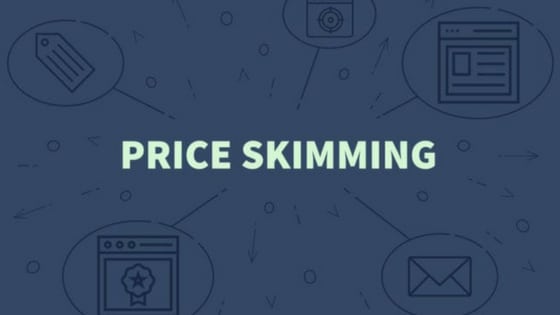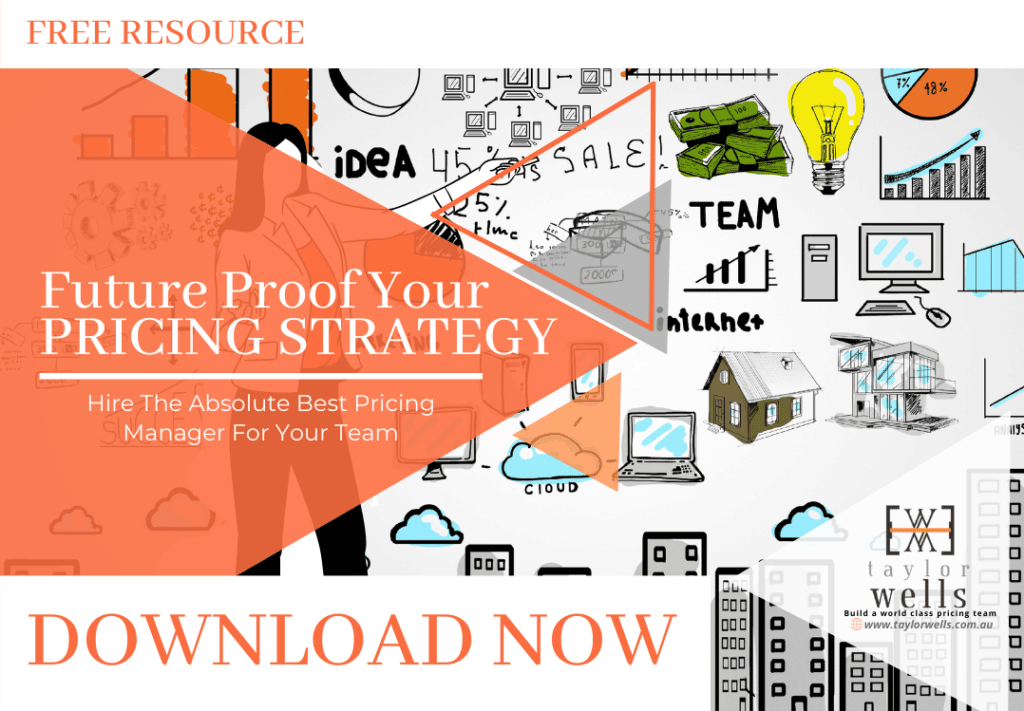
Price Skimming: Have You Underpriced Your New Hit Product? 🍅
When a manufacturer, distributor or retailer enters the market with a new product, it can be particularly difficult for them to know which pricing strategy will maximise product sales and margins. Should they choose a price skimming strategy or penetration strategy? Should they be setting an initially high price to recover the costs of capital assets quickly? Or setting an initial price low to drive market share and exclude potential competition?
>Download Now: Free PDF Future Proof Your Pricing Strategy
Many B2B and retail businesses make the mistake of falling in love with their products. They believe that because their new product is faster, better and more unique than anything on the market, the world will be beating a path to buy it. Not the case. The world is brutal, and people don’t care as much as you do about your products or services.
In this article, I’m going to show you how to price your product like a pricing pro. To understand the strengths and weakness of a price skimming strategy.
What is price skimming?
Price skimming is a basic pricing model or strategy for pricing a newly developed product or service. Price skimming involves setting a price so high that most potential customers will decline to buy the new product. Typically, unit sales of a skim-priced item will be low. However, the high per-item profits make price skimming a potentially viable strategy.
The product’s or service’s high price attempts to make a profit by appealing to those few customers willing to pay a lot or who understand its value. A high price can also eliminate price-sensitive customers or customers that do not understand the value.
Whenever a big brand enters a new market or even an emerging economy, they typically choose a price skimming strategy. Usually, they do this, by applying a more significant percentage mark up on costs to derive a price than they would typically – a cost-plus price skimming approach.
Or, if they are entering an emerging economy, many businesses arrive at the higher price by multiplying the home country price by the exchange rate and then add the customs duties and taxes on top – a fancier cost-plus pricing skimming approach to setting an initial price.
Examples of companies that have used this strategy include Apple with their iPhones and iPads, Microsoft with their Xbox consoles, and many other companies that release a new product on the market. These companies can take advantage of the fact that customers want to get their hands on the latest products, so they are willing to pay more for them initially.
What are the pros and cons of using price skimming for a new product?
The primary benefit of using price skimming as a pricing strategy is that it allows companies to quickly obtain profits in the short term, and the high initial prices act as a barrier to competitors. It also helps companies create an image of luxury and exclusivity, which can be appealing to certain customers.
However, there are some drawbacks associated with price skimming as well. Price skimming limits the potential market size since it’s not suitable for all demographic segments; those on lower incomes may be unwilling or unable to pay the higher prices. Additionally, many customers may be turned off by the high prices and choose to wait until further price reductions are made.
Therefore, it’s important for companies to consider both the pros and cons of using price skimming before making any decisions. By understanding these different aspects of pricing strategies, companies can make more informed decisions about how best to launch and price new products.
Price Skimming: How do you make sure you are not underpricing or overpricing your new hit product?
If you intend to sell products quickly in the market using price, then price skimming might not be the best approach for you. In this instance, you may be better off choosing a penetration strategy and setting the price of your newly developed product low to tap into a high-volume market. Typically, if you do this, your per-item products will be lower than if you used a price skimming strategy. However, you will be able to push more volume quickly and penetrate the market.
If you believe your product is better than the competition, demonstrate it and charge more than rivals based on value. But don’t get too hung up about whether your product is better or worse than the competitors. Look at the variety of cars on the road, for example; not everyone wants to drive a Porsche even if they have the money to buy one. Don’t worry if your product isn’t as good as the competition.
Think about the probable length of the product’s life cycle. The amount of capital needed to get the product off the ground, customer value drivers by product and segment, followed by a detailed analysis of the elasticity of demand during the early life of the product. These are just a few things a dedicated pricing function should be doing.
Once you feel confident with your price skimming strategy, evaluate a price skimming approach across different channels. Carefully, consider your online play, for example. Customers continuously receive offers from a variety of well-known brands like yours (approximately 400 a day according to the latest research). Like you, your competitors are also promising great value to customers and offering discounts. Sometimes less than half of what they would have paid for a product to get customers to buy newly developed products.

Price Like A Pro Using Price Skimming
To be confident that a price skimming approach is right for your business, think about how your company currently sets prices for its products:
- Is a markup on costs the best way to calculate initial high rates for your price skimming strategy?
- Do you think a general price skimming approach is exposing the business to margin risk? What are these risks, document, and evaluate?
- Is there an opportunity to understand how your customers value your products and services before you decide on a price skimming strategy? How do you determine value? Is there a better way of defining and quantifying the amount to set initial prices?
Price-sensitive customer segments need to be approached differently than more mature customer segments and markets. It is not as simple as deciding on an approach and then implementing it. You need to test and learn how customers value your products before you know that a price skimming approach is right.
Many businesses make the mistake of setting initial prices based on costs or relying on the tangible qualities of their products to demonstrate value when in fact customers pay more for risk avoided. This will not give you the results you expected. We find that when a business offers a product or service that is either unique or ahead of its time, customers take more time to understand the value of their offer. You want to entice customers to buy from you, especially when a product is genuinely new and unique.
Implications
In considering a price skimming strategy, it is important to make strategic decisions to avoid margin risk. You need to spend much more time thinking about the right pricing strategy to win customers over. Some customers don’t always want to buy the best or pay for value, others will. Will a price skimming strategy work for all your customers? Probably not. Think about the early adopter curve – i.e., early adopters versus laggards. Most people take longer to buy an unknown, novel product than you think.
A superficial price skimming approach backed by cost-plus price-setting calculations is not enough to drive profit outcomes. In fact, you’ll probably end up either underselling your product or service or overcharging the very customer groups you want to attract.
Think about the longer-term impact of price skimming on the market. If market condition and price sensitivity data do not support a price skimming approach, don’t use it. You may be inviting lower-priced competitors to enter the market and push you out.
Online is an increasingly essential and profitable channel. Most businesses spend much more time thinking about in-store or catalogue pricing than their online strategy. The channel mix is changing rapidly. The business with the best online price strategy will reap more revenue opportunities than competitors with a traditional focus and fixed pricing.
〉〉〉 Get Your FREE Pricing Audit 〉〉〉
Bottom Line
Price skimming is a useful strategy, but it can be risky too since there is no guarantee of long-term success. It’s important to consider the customer base and the competitive environment when choosing a pricing strategy in order to maximise profits while still keeping customers happy.
The key takeaway from price skimming is that companies should always strive to find the best balance between profits and customer satisfaction. To do this, they must keep an eye on the market and competition to ensure their prices remain competitive. By adopting a well-thought-out pricing strategy, companies can ensure that they are meeting customers’ needs while maximising profits in the long run.
The consequences of applying the wrong pricing strategy are hard to miss. Customers will struggle to access vital services when they need them. Manufacturers will consistently miss out on revenue opportunities because of non-strategic (unprofitable) thinking. Don’t lose another dollar implementing the wrong pricing team strategy – download our free guide here on all things pricing strategy related.
For a comprehensive view and marketing research on integrating a high-performing capability team in your company, Download a complimentary whitepaper on How To Maximise Margins.
Are you a business in need of help aligning your pricing strategy, people and operations to deliver an immediate impact on profit?
If so, please call (+61) 2 9000 1115.
You can also email us at team@taylorwells.com.au if you have any further questions.
Make your pricing world-class!
Related Posts
Leave a Reply Cancel reply
Categories
- marketing strategy (26)
- Organisational Design (14)
- Podcast (114)
- Pricing Capability (87)
- Pricing Career Advice (10)
- Pricing Recruitment (19)
- Pricing Strategy (291)
- Pricing Team Skills (13)
- Pricing Teams & Culture (25)
- Pricing Transformation (47)
- Revenue Model (25)
- Sales Effectiveness (27)
- Talent Management (7)
- Technical Pricing Skills (35)






